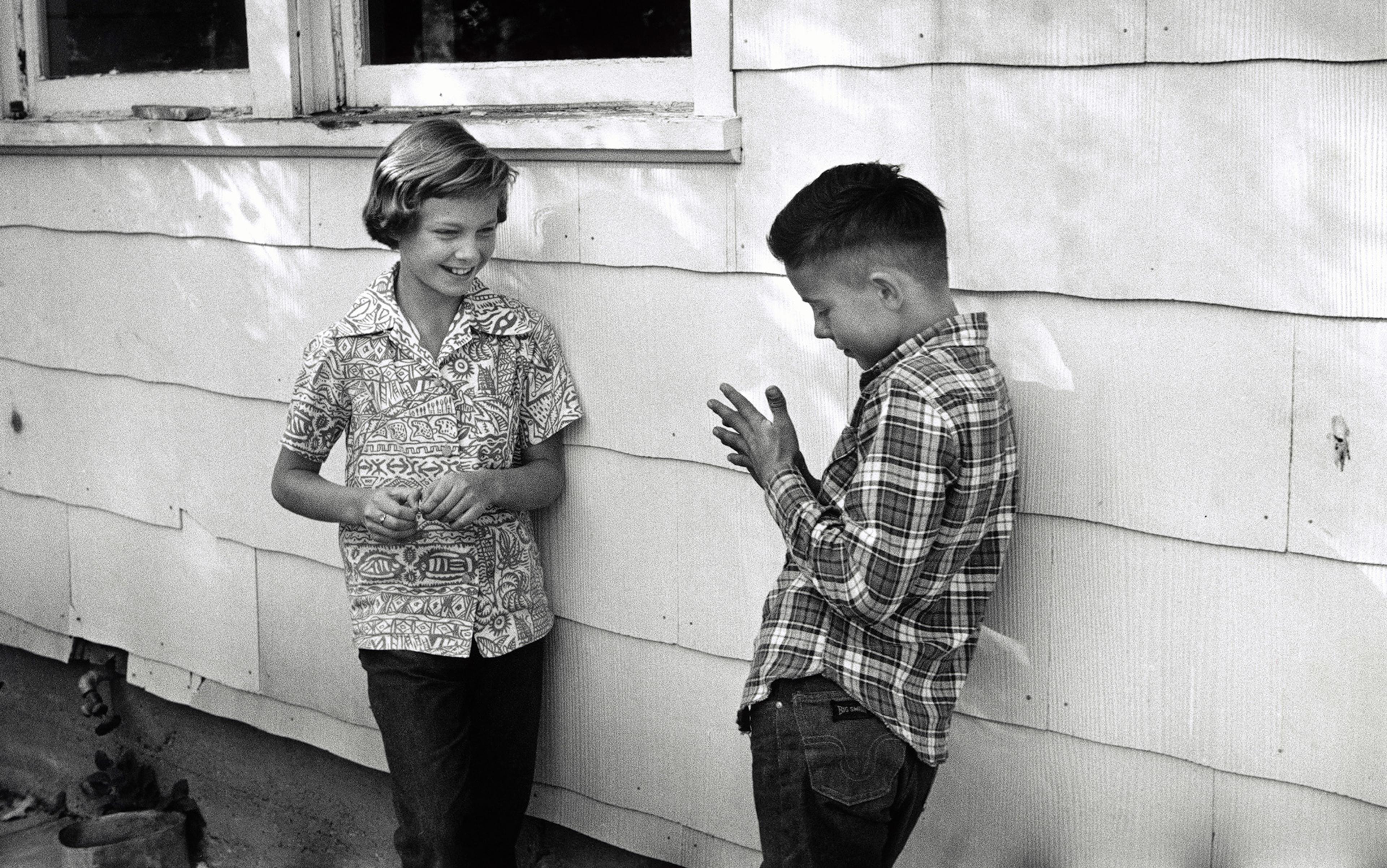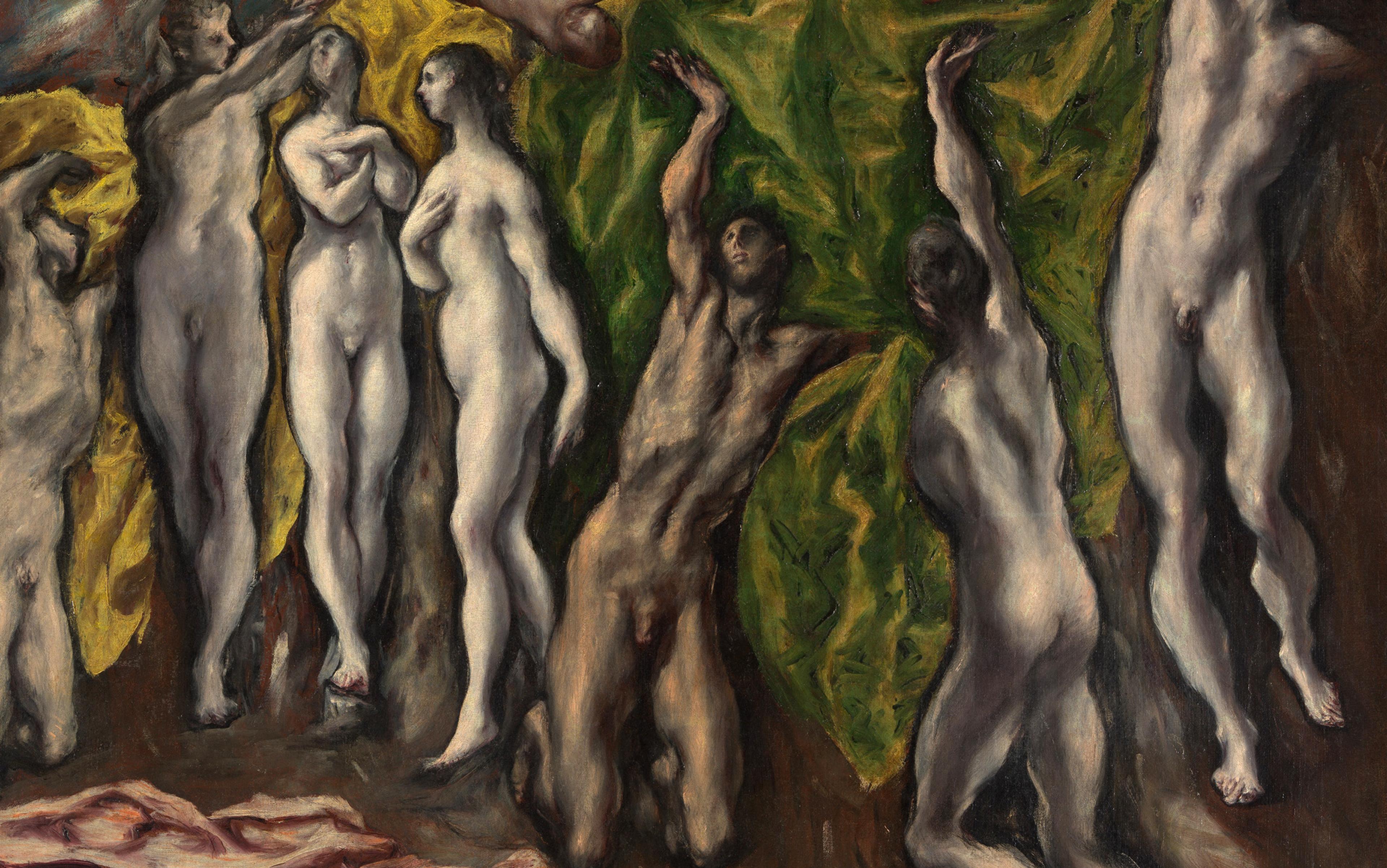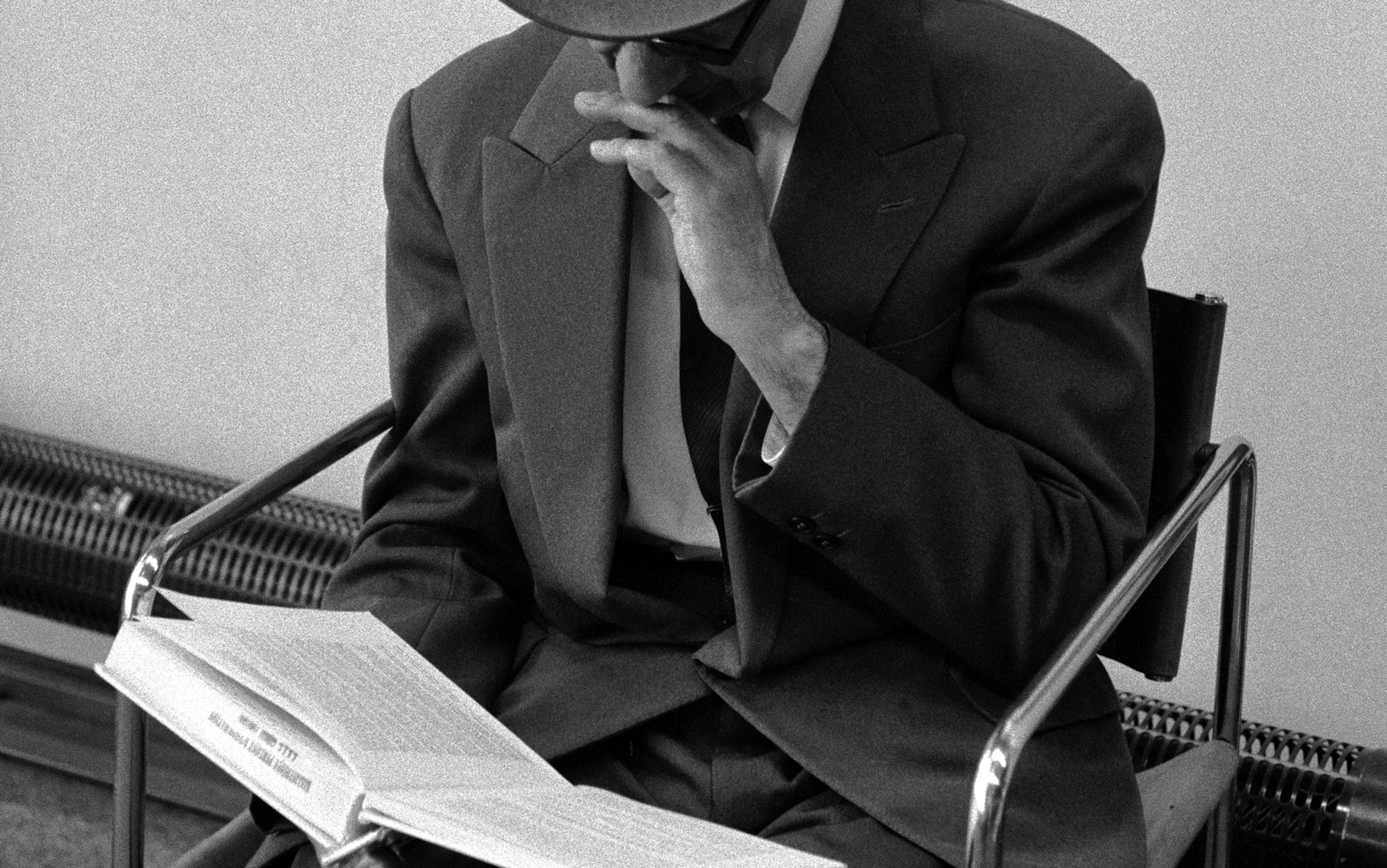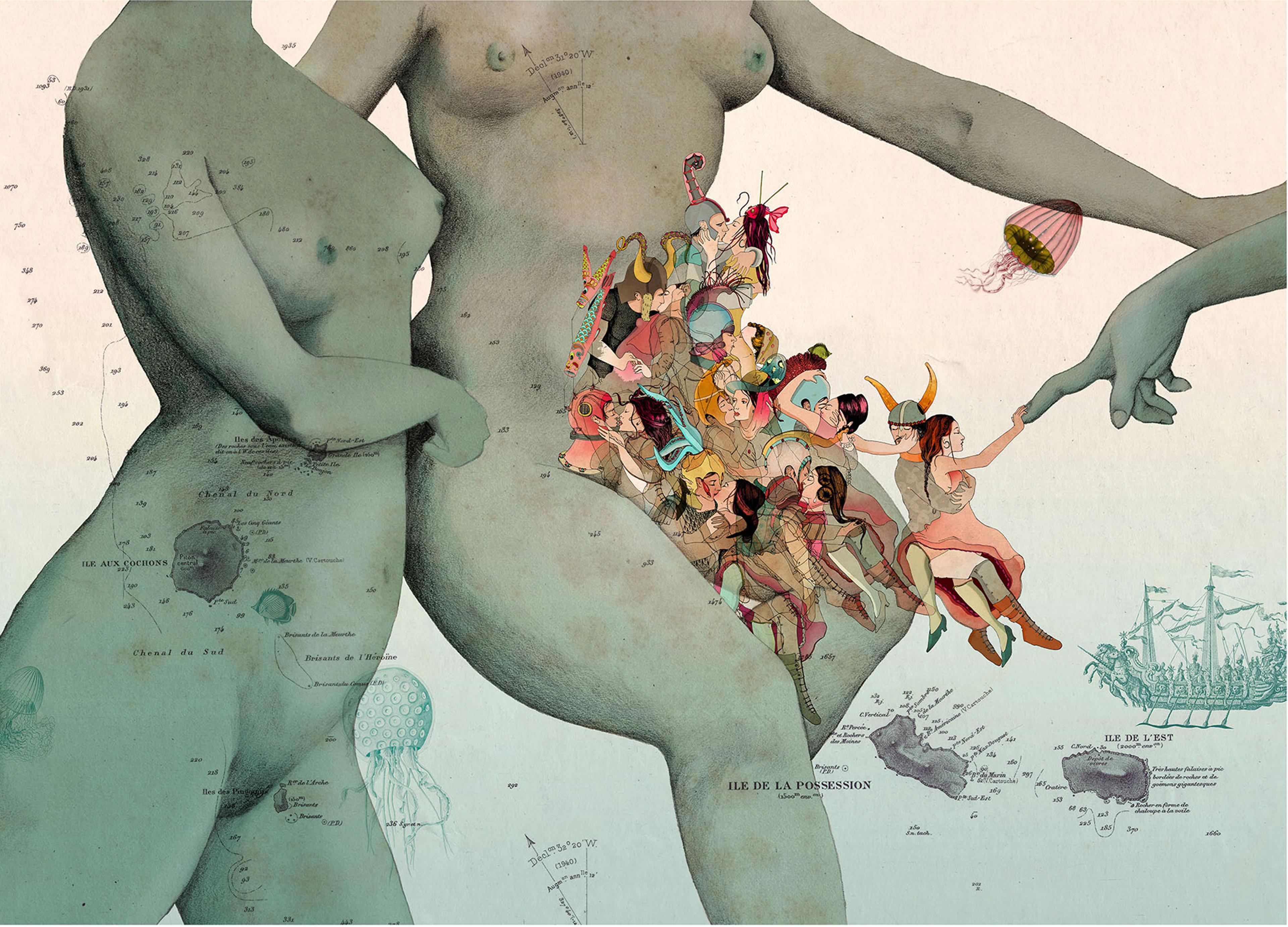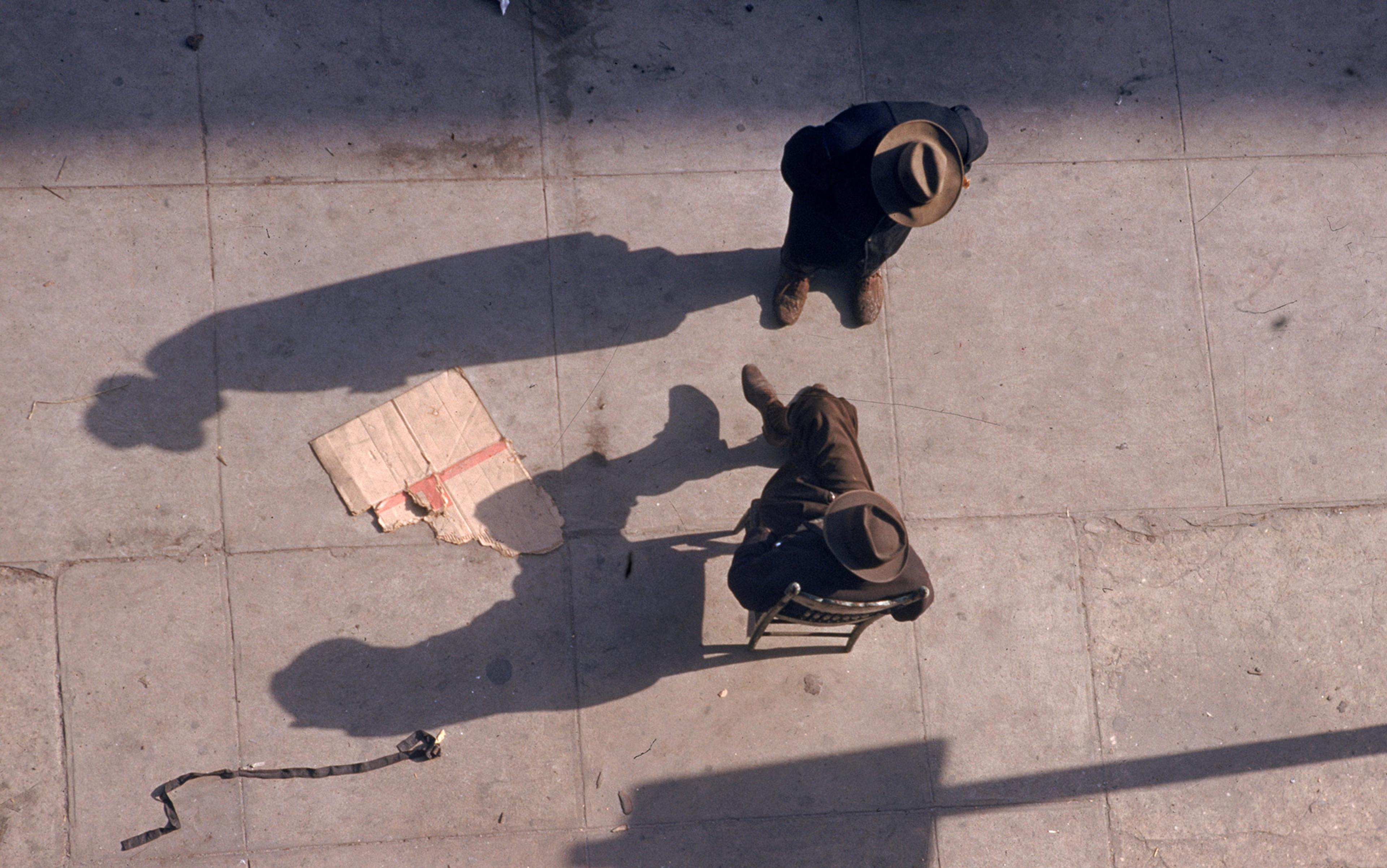‘As far as the education of children is concerned,’ wrote Natalia Ginzburg in 1960, ‘I think they should be taught not the little virtues but the great ones.’ Not thrift, caution, shrewdness or a desire for success, but generosity, courage, frankness and a desire to be and to know; ‘not tact [diplomazia] but love for one’s neighbour and self-denial.’ This essay, ‘The Little Virtues’, gives the title to Ginzburg’s 1962 collection, which starts with the melancholic ‘Winter in the Abruzzi’, about the early war years spent in the countryside away from Rome, before her husband was tortured to death by fascists.
Ginzburg’s wisdom is cogent and moving; but there is something in the trajectory of her essay that intrigues me: which is that her relegation of tact among the little virtues is then followed by an unselfconscious demonstration of that virtue in its most authentic form. Indeed, tact is often considered a luxury of social interaction, something supererogatory; commendable, but not required, as the philosopher David Heyd points out in 1995. It is a form of paying close attention to the particulars of a situation and the feelings of another person, neatly illustrated by Queen Victoria drinking rose water from her finger bowl, to put at ease her guest, the Afrikaner president Paul Kruger, who had committed the egregious mistake first; or by a person swiftly apologising: ‘Pardon, Monsieur,’ after inadvertently opening a bathroom door onto the privacy of a lady. The high sensitivity displayed in tactfulness bespeaks a more discerning attention to nuance than is required by the more urgent demands of moral virtues, recognised across cultures for their concern with fundamental human interests and rights.
In the early 1960s, Ginzburg observed, a desire to reassert oneself against the authoritarianism of the war generation was checked by a fear of ridicule, so one hid ‘behind caution and shrewdness’. Despite this emphasis on cool conduct, Ginzburg lays out her child-rearing philosophy in no timid terms – perhaps recognising that it is through education that one begins to lay out the foundations of a different world. She speaks of education as ‘a certain climate in which feelings, instincts and thoughts can flourish’, and she cautions against too close a friendliness with one’s children, ‘so that they can develop separately from us’. In other words, restraining one’s presence and feelings originates in a desire to give space to another being to flourish. It’s an exercise in discretion and gentleness; or, in one word, tact.
Looking back over the past century, the historical moments when tact emerged as an ideal on the horizon of sociability were times when life had been cheapened; when humanity was threatened by war, pernicious ideologies, or violence in the bloody aftermath of revolutions. When the mind refuses to grasp the magnitude of a death toll, the idea of cherishing a sensitivity to human individuality feels so distant as to look like an escapist fantasy. Yet, it is precisely its remoteness – the danger of its falling into oblivion – that demands its eloquent affirmation.
Notably, tact surfaces in the work of intellectuals who reflected on the moral life during the Second World War and its aftermath. Roland Barthes, for example, chose the subject of living with others for his course at the Collège de France in 1976-77. His title, Comment vivre ensemble (or How to Live Together), registered a sense of perplexity – as if living together were a near-impossible task in an age that had witnessed the bankruptcy of moral norms. Uncomfortable with his position of institutional authority, Barthes pointed out that it had become impossible to teach people how to live, that this could be the object only of a shared quest. So he invited his students to help him develop a vocabulary of distances, tact and attunement to others, not by following a set method but, rather, by taking detours through culture.
Tact, or délicatesse, was an old obsession of Barthes’s, going back to the early years of his career in the polarised, Manichean world of the 1940s. That had been a time, as the historian Tony Judt in 1992 showed, when experience, choices, humanity itself were ‘divided … into binary categories: good or evil, positive or negative, comrades or enemies’. The suspicious atmosphere of the Cold War in France, when both Left and Right were in Barthes’s view equally compromised, required not political commitment, as defended by his contemporary Jean-Paul Sartre, but a particular kind of neutrality – difficult to define, because it was not an absence of concern or lack of care; rather, it came from a desire to preserve the integrity of life itself, in its endless human differentiation. The neutral is, for Barthes, a refusal to participate in oppressive social systems; an anticipation of utopia. Délicatesse crystallised, in time, as an example of the neutral.
Barthes’s attention to tact was a way of reclaiming the idea of human individuality – his way of being present in the struggles of his time, as he put it, which his student Julia Kristeva has characterised as a ‘rebellious delicacy’. That the integrity of human life had fallen into disrespect in recent years was most obvious in the uniformity of people marching together in brown shirts; in images of soldiers dying on battlefields; and, one might add, in the regimentation of everyday life behind the Iron Curtain in totalitarian societies that would keep their populations under surveillance and control. The closest Barthes came to a substantial determination of tact was in his insistence to pay attention to nuance; his course, he explained, was an ethical project: living attuned to nuance.
His diagnosis, that moral discourse had lost its prestige, would have been familiar to readers of Minima Moralia (1951) – the book written by Theodor Adorno during his American exile, and whose title alludes to Aristotle’s Magna Moralia, the ‘melancholy science’ that had concerned itself with the teaching of the good life. In Adorno’s view, the businessman, the manager and the Nazi doctor share a mental habit of scrutinising: they expertly assess people’s suitability and divide them into friends or enemies, insiders or outsiders, accomplices or victims:
The fixed, inspecting, hypnotic and hypnotised stare that is common to all the leaders of horror, has its model in the appraising look of the manager … The last stage is the medical examination to decide between capacity for work and liquidation.
When everyone is judged only as means, rather than as ends, he adds, the capacity to see people for who they are diminishes.
If our historical remove from Nazi extermination camps makes Adorno’s uncompromising reflections look purely circumstantial, his observations about life under capitalism in the United States strike a resounding note. With the critical detachment available to a foreigner in exile, Adorno saw a society ‘stamped by the economic principle’, in which a consumerist rapport with commodities extended to people, who became reified and fungible. The perception of people’s ready availability reduces the complex rituals of human interaction to the belief that the most direct way of reaching another person is by way of the straight line.
Disregard for the irreducible difference of other people can be remedied only through a recognition of distance
Perhaps even more relevant to our day is his analysis of the ‘included excluded’, those workers perceived as disposable, hired and laid off based on the fluctuations of economic cycles. Coincidentally, in How to Live Together Barthes identifies a similar type: the ‘integrated reject’ (or ‘the Sponge’, for its capacity to absorb economic shocks, as well as its symbolic value as a scapegoat). In the eyes of the system, these people don’t matter as subjects, that is, as fully human beings with lives that have integrity and that need to be supported.
What then would a humane community and mode of sociability look like? As late (and ambivalent) representatives of a dying European bourgeoisie, Barthes and Adorno cling to tact as to a fragile heirloom, a modest remnant they would like to rescue from the ruins of damaged life. Strikingly, they both think of tact as a thoughtful calibration of distance. Borrowing the notion of aura from Walter Benjamin, who uses it with reference to inanimate realities such as cult objects or even mountains, Adorno writes: ‘Intimacies estrange, violate the imponderably delicate aura of the other which is his condition as a subject.’ It follows that denying the ‘strangeness’ of another person – their difference, what we don’t know about them, their life, their interiority – amounts to a ‘supreme wrong’. It negates them as a particular human being following the capitalist logic of incorporation in ‘the inventory of property’. This disregard for the irreducible difference of other people can be remedied only through a recognition of distance.
In How to Live Together, Barthes similarly calls for ‘a science, or perhaps an art of distances’. Recalling the Sophists, who, like cobblers, showed their disciples various kinds of shoes, rather than teach them how to make shoes, Barthes chooses to build his science, or art, using examples from his favourite books. He cites monks living together in coenobitic communities on Mount Athos, their bodies ‘enveloped in distance’; the libertine Marquis de Sade praising his wife’s appreciation of the ‘exquisite delicacy’ of his dirty laundry as she came to collect it from the Bastille. A Chinese emperor careful not to wake up the lover asleep on the royal sleeve; the memory of a young boy offering the gift of pebbles to his mother. Porcupines trying hard to find the right distance among themselves, so they might stay warm, but not too crowded.
In his inaugural lecture, Barthes confessed that the whole course originated in a fantasy he hoped to expand into a novel, featuring a small community of eight to 10 individuals guided by the principle of délicatesse, who would strive for ‘a conjoining of distances’. The formulation sounds as strange in the French original as it does in English: why the plural – distances? On perusing Barthes’s lecture notes, one gathers that the allowance of space he has in mind has a twofold motivation: on one hand, ‘distance’ makes room for the other person’s difference, so that it is not trivialised or smoothed out in the name of human universality; on the other, it reflects acts of self-removal, so as not to impose one’s subjectivity on other people: one ought to be wary of ‘feeding the imaginary of a relationship’. Barthes most likely assumes reciprocity in this domestic utopia: everyone involved would be able to strike a fine balance between sociability and solitude.
Ginzburg was not alone then in thinking about education in times of ‘shrewdness’. Barthes and Adorno were in similar situations, the former sharing his thoughts about how to live together with his students, the latter addressing his contemporaries. Barthes’s and Adorno’s reluctant manuals for living have affinities with the tradition of codes of conduct, that is, with the realm of civilisation, sociability and etiquette. The original type in this tradition is the courtier, and the inescapable reference is The Art of Worldly Wisdom (1647) by Balthasar Gracián, a book that was rediscovered by many German intellectuals in the 1920s and ’30s, some in exile. In Cool Conduct (1994; 2002), Helmut Lethen, professor of German at Rostock University, has shown how émigrés became attached to Gracián’s book about strategic survival in a hostile environment: Werner Krauss wrote his study of Gracián while in prison; Norbert Elias, escaping to Switzerland, France and England, was working on his seminal study The Civilizing Process (1939), which portrays the courtier as an example of ‘existence at a distance’ in court society; Erich Auerbach, on his way to the US from Turkey, made notes in the margin of Krauss’s book, highlighting the value of moderation; and Helmuth Plessner, who would flee the Third Reich for the Netherlands, defended a model of cool sociability, distance and masks, reminiscent of the emotional restraint of the courtier.
What might fall out of this picture is a deep concern over the trivialisation of life as the basis for tact, as illustrated by Barthes’s and Adorno’s reflections. Like Ginzburg, these two thinkers weren’t ultimately concerned with the externality of appearances. Instead, they worried about how life in its richness and individual instantiations could reassert itself; Ginzburg’s writing reflects this, too. There lurks, if not explicitly in all their words, at least implicitly in the spirit of their thoughts and attitude, a sense that tact might enable something inchoate: a potentiality not only of personhood, but also of sociability and societal configurations. A sense that such potentialities can materialise only if one takes a step back so others can fully be, instead of performing roles assigned to them by a social or economic system.
Neither Barthes nor Adorno engages explicitly with Plessner, an earlier champion of diplomacy and tact, who developed a whole theory of human experience as the basis for its justification. Plessner’s relative lack of recognition by his contemporaries has something to do with timing: his Limits of Community (1924) was entirely overshadowed by Martin Heidegger’s Being and Time (1927). (It is ironic that Plessner warned against the dangers of the blood-and-soil community given how hard a time Heidegger would have in disentangling his reputation from his temporary association with Nazism and its stifling vision of community.) Plessner didn’t discount the value of community or the inevitability of strong communal bonds, but he was suspicious of the politicisation of the ideology of community, such as would be the case in Nazi Germany. Distinguishing between two types of community – based on blood ties (Blutsgemeinschaft) and on rational persuasion (Sachgemeinschaft, such as Kant’s community of rational ends) – Plessner argued that the full transparency demanded by both these modalities of life was not conducive to human dignity and flourishing. He defended the cool conduct of diplomacy in public and tact in the private sphere.
Tact ‘reaches over the entire width’ of the existence of a person’s soul
Plessner speaks of cultivating a ‘dance-like spirit’ or virtuous mastery of ‘forms of play where persons come close to each other without meeting’ and where they establish ‘distance without damaging each other through indifference’. Zooming in on tact as an ideal mode of conduct in interpersonal relations, he describes it as a threefold ability: to notice ‘incalculable differences’; to comprehend the wordless and untranslatable language of conduct and physiognomy, spoken in accord with ‘unfathomable symbols of life’; and to respond to ‘the subtlest vibrations of the environment’. This ability transcends the sphere of morality: it is unconcerned with good or evil, truth or error. Rather, its rarefied zone is ruled exclusively by the value of beneficence, or what Plessner calls ‘the hygiene of the greatest possible nurturance’. At stake in a distanced sociability was, for him, nothing less than the life of ‘the soul’.
Thus Plessner positioned himself against Cartesian dualism and the philosophical tradition that inherited it. Attached to the Christian mind/body polarisation, this tradition values interiority, morality, culture and a certain understanding of community at the expense of anything external – the body, the sphere of civilisation, society. Plessner’s Levels of Organic Life and the Human (1928), in which his theory of human existence crystallised, seeks to integrate inner life and bodily existence. (He saw his work as a continuation of Wilhelm Dilthey’s hermeneutics, attuned to the latter’s focus on the problem of understanding others. The discipline Plessner founded with Max Scheler – philosophical anthropology – was an attempt to synthesise the fragmented insights of social sciences and cultural analysis, in view of a comprehensive understanding of what it means to live a human life.)
In short, following Plessner, human existence is a striving between being and becoming – between an imperative of form, of being recognised as someone by others, and an internal requirement to live freely, alert to myriad potentialities. Social life might require the semblance of unified personhood – in a short biographical note, my friend might introduce herself as a doctor, mother and runner – but lived experience is irreducible to such descriptors: they are at variance with instincts, conflicting desires, ambivalence and other centrifugal forces of inner life. An ideal interpersonal distance accommodates the integrity of human life understood as unfathomable potentiality, one not fully transparent to the person herself; tact, as Plessner puts it, ‘reaches over the entire width’ of the existence of their soul.
Plessner, Barthes and Adorno theorised tact in terms that are similar to what contemporary thinkers, such as Pierre Zaoui and Anne Dufourmantelle, have more recently called discretion and gentleness. In La Discrétion, ou l’art de disparaître (2013), or ‘Discretion, or The Art of Disappearing’, Zaoui, a philosopher, proposes an antidote to the ubiquitous surveillance of everyday life: the anonymous dream of 15 minutes of disappearing, as a reversal of Andy Warhol’s 15 minutes of fame. Zaoui isn’t writing about ‘discrete souls’, or about removing oneself from social life forever. Rather, the temporality of discretion is the discontinuous, as suggested by the etymology discretio, which in Latin means discernment, separation, distinction, and which also gave us the mathematical sense of discontinuous. Zaoui has in mind an active practice of setting aside for a short time the illusion of being irreplaceable and responsible for everyone, such as in the experience of immersion in a crowd or in the anonymity of streets. The easy delight of flânerie – being comfortable with not knowing others, letting them be, even enjoying the unfathomably diverse spectacle of human life at a remove from it – makes the appeal of this experience accessible to anyone.
He notes that all cultures have imposed a separation or an adequate distance not only among humans, but also in the relationship with God or with nature, and even in relation to oneself. Zaoui cites practices that one refrains from, not in order to avoid danger for oneself, but to avoid hurting others. For example, in the Amazonian myths analysed by Claude Lévi-Strauss, about the voyage of the Moon and the Sun in a boat, the world can exist only if it travels at the right distance from both: too much proximity to the Moon would make it silent, raw and dark, while the Sun, too close, would burn the world, blinding it. Evoking this myth from Strauss’s Le cru et le cuit (1964), or The Raw and the Cooked, Zaoui extrapolates discretion to encompass morality:
Or in such a voyage all the senses of discretion appear condensed: the Moon and the Sun, one at the prow, the other at the stern, are in dissymmetrical positions that forbid them to face each other (visual discretion); they must not make too much noise lest they should scare the fish (auditory discretion); and they must not move lest they should keel over (gestural discretion). Discretion is therefore not just simply required by certain moments or contexts, it is not a specific moral obligation, it is morality itself.
Zaoui’s equation of discretion with morality resonates with the way that tact engages the whole of human experience. This is apparent in the etymological connection between tact and touch. Just as there is no specific organ that corresponds to touch (it is the body itself that is involved in tactility, as a sensor), tactful behaviour is, as Heyd contends, ‘the outcome of an attention to the personality and circumstances of the other, achieved by general openness and sensitivity rather than by any specific skill or faculty, cognitive or emotional’. This point invites a revision of one’s understanding of tact as a ‘little virtue’, in the form of a recognition that it originates in a sense of life lived in full awareness of the richness of sensory experience, but also open to that which transcends one’s finitude, experience and understanding. Discretion, which Zaoui paraphrases as ‘following the world’ (in the double sense of watching, but also of walking slightly behind) is instrumental in expanding one’s view of the world – that repertoire of experiences on the basis of which one resonates with others.
Plessner’s explanation of tact as originating in the ‘hygiene of the greatest possible nurturance’ situates it on the same sensitivity frequency as gentleness – a quality that the late Dufourmantelle, a psychoanalyst who drowned while rescuing two children in 2017, likened to ‘the fierce nobility of a wild beast’. In Power of Gentleness: Meditations on the Risk of Living (2013; 2018), she claims that our era infantilises gentleness, overlooking its subtlety and diluting it as mawkishness. She sees it, rather, as an enigma, ‘a force of secret life-giving transformation linked to what the ancients called “potentiality” [puissance]’. It shows itself ‘on the threshold of passages signed off by birth and death’, such as giving birth, caring for a child, or for the sick or elderly, protecting the inchoate and the fragile. Echoing Kristeva’s rebellious delicacy, Dufourmantelle alerts her contemporaries to this ‘active passivity that may become an extraordinary force of symbolic resistance and, as such, become central to both ethics and politics’.
Zaoui explores it, too, when he articulates the political potential of discretion to reveal zones of social invisibility and silence: it is the political experience of seeing a shift in the partitioning of the world (as the philosopher Jacques Rancière would put it), of seeing ‘places, voices, attentions shift, and recognising that such a shift can be operated by those who are usually not seen – the shy, the anonymous, the subaltern, the homeless, the undocumented.’
Exercised by the oppressed from a place of inequality, tact sinks them only further into servitude
Discretion and gentleness define tact without exhausting its political significance. As we have seen with Barthes, Adorno and Plessner, an attachment to tact is a form of protest against the regimentation of life by fascism. Against imposed uniformity, one asserts human individuality; to the ideological distortion of reality, one opposes nuance and precision; and to the limitations of knowledge and withdrawal of empathy, one responds with education and forays through culture. So where do these European émigrés’ thoughts about tact in dark times leave us? Do they have any purchase on our own exceedingly polarised time, when protests against the valuation of certain existences over others have reached global scale?
In a general sense, tact seeks to redress a temporary asymmetry in interpersonal or social relationships. It presupposes equality, or the semblance of equality in the social sphere. Adorno and Barthes don’t spell this out fully, but in the original environment where they first experienced tact, it was the privilege of the comfortable bourgeois, who could afford to keep an eye on the appearance of equality in the social theatre of human interaction. (Barthes saw this difficulty, when he wondered in his autobiography whether it might be possible to enjoy the charms of the bourgeois art de vivre – presumably including délicatesse – in a socialist society, as an anachronism.) Today, we are further removed from the demise of the European bourgeoisie, which Barthes and Adorno contemplated nostalgically, and our awareness of radical social inequality renders this aspect obvious: namely, that tact makes sense only when one has the upper hand. Exercised by the oppressed from a place of inequality, it sinks them only further into servitude, reinforcing the status quo. And yet, the mobilisation of tact in dark times by so many thinkers over the past century means that they saw in it something more than a bourgeois luxury.
When Adorno denounced Nazism and capitalism for denying the humanity of certain people, and when Barthes defined the neutral as a neither/nor (that is, neither communism nor fascism), or ‘a choice on the side’, they implied that the system had diminished the human to the extent that there was no way of acting without becoming complicit in its pernicious agenda, and without damaging oneself and others. To recognise distance was to refuse the diminution of another. It was a way of asserting, if only in the realm of the personal, the integrity of the other person, and of life itself. In the domain of the political, however, discretion, in its strong sense, would require ‘following the world’ – that is, stepping back from visibility so that zones of invisibility might come to light. Tact’s attachment to the particular demands that we nurture life’s individual instantiations – not just some at the expense of others. In their name, righteous indignation, protest and eloquence are the only way forward.
As Barthes saw it, tact is the cultivation of a capacity to make fine distinctions, an aspiration to live attuned to nuances. As such, it refuses binaries, labels and dogmatism – including with regard to itself: imposing the tall order of exquisite sensitivity on everyone at all times would be alien to it. (Wouldn’t such imposition of uniformity be similar to the regimenting order of fascism?) Later, Iris Murdoch would elaborate her philosophy around a similar ‘nostalgia for the particular’. Perhaps tact can be lived only as a pursuit, rather than with the assurance of an accomplished task. In this sense, Barthes spoke of it as a life-diet without teleology. Cautious in the resolute feverishness of revolutions, it recognises the time and effort required by permanent change.
Ginzburg was right to argue that in educating one’s children, one must not begin with tact. Not because it is trivial or insignificant, but because it presupposes the exercise of discernment that grows with life-experience. It is the education we engage in, on our own and in conversation with others, once we have had the unsettling realisation that we are not fully transparent to ourselves, and that our upbringing, socialisation and institutional education lack the objectivity, ideological neutrality or moral purity that we might wish they had.
Plessner believed wholeheartedly in culture as a medium of self-knowledge, not just in a personal sense, but as an expansion of one’s understanding of what it means to live. With him, one knows that such understanding is never complete. In the process, one might become more and more acquainted with a sense of groundlessness, of not quite knowing, of feeling uncertain, and acknowledge this state as the precondition of tact.
To read more about the history of emotions, visit Aeon’s sister site, Psyche, a new digital magazine that illuminates the human condition through three prisms: mental health; the perennial question of ‘how to live’; and the artistic and transcendent facets of life.
